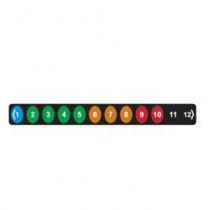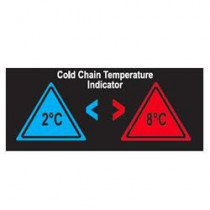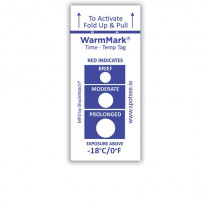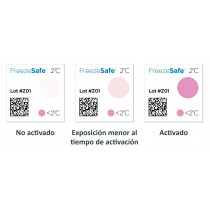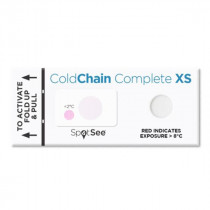No products
Prices do not include tax.
Meat thermometer: preservation and refrigeration temperature
Meat preservation temperature depends on the method used and the storage time required, as the process changes depending on whether it will be frozen or kept refrigerated. In both cases, however, the aim is to prevent the food from continuing its natural deterioration, which would make it a hazard to human health. Depending on the case, there are several solutions to control meat temperature.
Main thermometers for meat preservation control
Adhesive reversible thermometer for refrigerators. This indicator comes with 12 temperature points indicating the temperature of the refrigerator or cold storage by a colour change.
LCD fridge thermometer with 12 levels...29,88 €LCD reversible adhesive temperature indicator. This label changes colour on the basis of the temperature.
Reversible temperature indicator for the...42,95 €Irreversible time and temperature indicator by color change. This adhesive label alerts you to inappropriate temperature exposure by progressively changing the color of the control points. Each point is calibrated for a specific period of time, thus allowing control of the exposure time at that temperature.
WarmMark Time and Temperature (pack 100...227,50 €The FREEZESAFE temperature drop indicator is an adhesive label that, by means of a color change, alerts us that the temperature has dropped below a critical value. The color change is permanent and irreversible, so it acts as a control indicator, recording the event. It is supplied in packs of 100 units.
FREEZESAFE temperature drop indicator...184,17 €Coldchain complete XS is a temperature label for cold chain control. This indicator is irreversible and alerts us by means of a color change if a product has been exposed outside the required temperature range, both above and below it. It is supplied in packs of 100 units.
Coldchain Complete XS cold chain...307,00 €
Meat refrigeration temperature
Meat is one of the most consumed foods, so it must be treated with the utmost care. When it comes to preserving meat, there are specific temperatures must be respected. They must be maintained from the moment the animal is butchered since, from that moment, its qualities start to deteriorate relentlessly. Slowing down the action of enzymes and microorganisms already present in the product can only be done by using cold.Therefore, it is essential to keep the temperature below 4 °C, as germs thrive above this temperature and up to 60 °C. Additionally, meat that is not refrigerated tends to lose moisture and weight more quickly, which increases its decomposition by enabling the action of microorganisms.
Meat refrigeration temperature should therefore not exceed 4 °C, and the humidity should not fall below 90%. Moreover, if it is kept at 0 °C, the meat will last ten times longer than if it is kept at 10 °C. Ideally, however, fresh meat should be stored at −1 °C. For example, at this temperature veal remains intact for 3 weeks, and lamb, for 10 to 15 days.
Meat cold chain
Despite all of the above, the different needs of stores mean that temperatures are kept between 3 and 7 °C. These temperatures are relatively dangerous, but they are offset by swift product sales. This way, even though the temperature is higher than recommended, making it reach the consumer immediately limits the risks of microorganism propagation.
Because of this, the meat cold chain is maintained, although storage time is reduced because of these temperatures. Temperature indicators are available to businesses and the meat industry in general, allowing them to control the temperature at which meat is being stored. Based on this, they can estimate the maximum storage period.
Indicators for meat preservation temperature
Among the different control methods, temperature labels are a convenient and easy-to-use option. Reversible thermometers indicate the temperature of the product at all times, enabling the detection of changes in the refrigerator and corrective action to be taken.
In addition, irreversible temperature labels permanently record temperature changes. This way, they guarantee that the meat has never been exposed to temperatures that could be critical and break the cold chain.
The time and temperature indicators are labels that, in addition to permanently recording changes as irreversible, have the advantage to tell us the amount of time the temperature has been exceeded. This type of label is especially useful in the control of the cold chain of meat, since it will give us the information to know if the product may have deteriorated or is still useful for consumption.
There is also labels for temperature drop control. These indicators inform you if the temperature drops below a certain value. They are useful in the case of meat that has already been defrosted and therefore should not go through a freezing process again to avoid deterioration.
In short, a meat thermometer is a guarantee of good preservation. This is essential to prevent the meat from rotting and losing its properties or, in extreme cases, causing a serious health problem.

